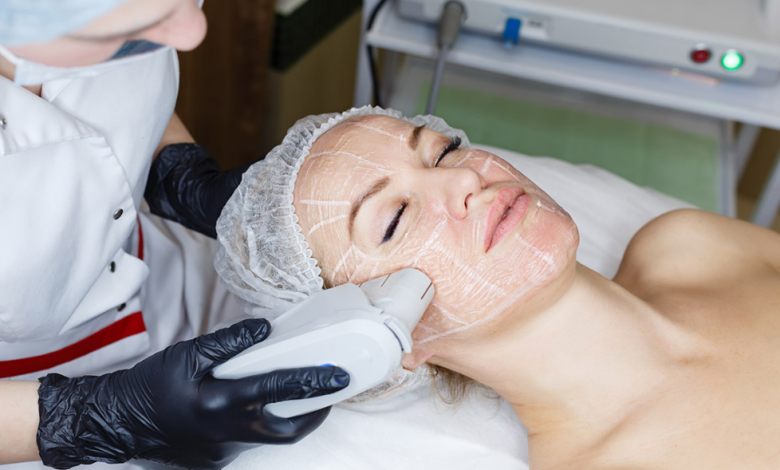HIFU Treatments Prostate Cancer

HIFU Treatment has been used to treat prostate cancer for over a decade in Europe, and has been approved for treatment in Canada since 2003. It is not currently available in the U.S. The cure rate using HIFU is similar to the traditional treatment methods of surgery and radiation, but with fewer significant side effects and less negative effect on quality of life.
Who Can Benefit From HIFU Treatment?
HIFU therapy is recommended for patients with localized T1 and T2 stages of prostate cancer. It is frequently chosen over more traditional surgical or radiotherapy treatments due to its low complication rate and relatively small chance of significant side effects.
Where impotence and radiation burns are common side effects from traditional treatments, side effects from HIFU are less radical and there are fewer occurrences of impotency and incontinence.
High Intensity Focused Ultrasound (HIFU)
Ablatherm HIFU Treatment does not involve surgery but instead uses high intensity focused ultrasound waves to destroy cancerous prostate tissue. It is done on an out-patient basis so there is typically no hospital stay required.
A local spinal anesthetic is used in combination with sedation through intravenous. A probe is inserted into the patient’s rectum and a focused beam of ultrasound waves is projected at the cancerous tissue on the prostate. The prostate is located in front of the rectum, so the computer guided probe can deliver the ultrasound waves through the rectal wall. A specially trained urological surgeon controls the procedure.
The prostate tissue targeted
The prostate tissue targeted is heated to temperatures in excess of 85°C destroying the cancerous cells. This process is repeated with a variable focal point until all of the cancerous material has been heated and destroyed. To treat the whole of the affected prostate area typically takes up to 3 hours.
Immediately after the HIFU Treatment, swelling of the prostate is expected. A temporary urinary catheter is put into place until the swelling recedes. This usually takes up to 14 days depending on the patient.
Follow Up for HIFU Treatment
The patient is discharged the day of the treatment with no dietary restrictions. The catheter can be removed roughly 14 days later. Antibiotics are prescribed for 2 weeks and PSA levels will be monitored for 3 months following the treatment.
Some complications that may occur are,
- Mild bleeding in the first stream when urinating
- Frequent and possibly an urgent need to urinate
- Urinary leakage upon physical exertion
HIFU Treatment Rates
Prostate cancer is a condition where cells within the prostate grow uncontrollably, often creating multiple small tumors within the gland. Early detection of the disease is critical because the cure rate is in excess of 90% when the cancer is confined to the prostate gland.
One treatment option using HIFU therapy is to spare the nerve entering the prostate when no cancerous cells have been detected in the nerve. If PSA levels after treatment remain high, the treatment can be repeated.
In a 5 year study at the University of Regensburg, Ablatherm HIFU Treatment resulted in over 93% of patients with T1 or T2, that is, prostate confined cancer, showing no return of cancer cells 22 months after treatment.
Side effects recorded during this study were minimal for the most part.
- Death 0%
- Digestive complications 0%
- Mild to moderate urinary incontinence 5%
- Total urinary incontinence < 1%
- Blockage of the urethra 8%
- Sexual impotence with nerve-sparing procedure 20%
- Sexual impotence without nerve-sparing procedure 66%
Another positive result from this study was that none of the patients reported a decline in their quality of life after completion of the HIFU Treatment.
The overall findings of this study and usage of this procedure since the study show that HIFU prostate cancer treatment can provide a cure of the disease if it is caught in its early stages.
Repeat Treatments
Because HIFU prostate cancer therapy is non invasive, it can be repeated or used as a follow-up to external beam radiation therapy. Patients showing a recurrence of the disease after treatment remain eligible for a repeat procedure or for surgery, radiotherapy or hormone therapy where required. HIFU therapy has proven itself to be an effective first treatment for early stage prostate cancer patients. Research is continuing to assess its effectiveness against more advanced cancers. For North American men, the Ablatherm HIFU treatment is currently only available at the Maple Leaf HIFU clinic in downtown Toronto.
HIFU is a therapy option for localized prostate cancer
High Intensity Focused Ultrasound (HIFU) prostate cancer treatment is one of the most rapidly growing treatment methods around the world. HIFU Treatment is a therapy option for localized prostate cancer that may offer a balance between eliminating cancer and maintaining quality of life. HIFU in India offers a non-invasive alternative to the traditional treatments for uterine fibroids. It combines magnetic resonance (MR) imaging with HIFU.
In India, Apollo Hospitals was the first to introduce the Philips MRI-guided HIFU. Prior to this, existing treatment options included medication or surgical removal of fibroids. In contrast, MR-HIFU from Philips offers women a quicker, non-invasive and precise treatment option.
MR-HIFU system
According to doctors, the MR-HIFU system uses safe and focused ultrasound waves to heat and coagulate benign or cancerous tumour tissue deep inside the body without damaging intervening tissue, and combines this with advanced treatment planning, guidance and temperature monitoring provided by MR.
The procedure can be performed on an outpatient basis, with the patient leaving the hospital the same day and almost fully recovering within a few days. The procedure can cost up to 1 lakh but is covered under insurance schemes.
Advantages of HIFU Treatment in India
- HIFU treatment is not as invasive as radical prostatectomy, brachytherapy or cryotherapy.
- It requires a short hospital stay of less than 24 hours.
- The treatment can be repeated if necessary.
Preparing for HIFU
HIFU is usually done as a day-case procedure under general anaesthesia. A spinal anaesthetic with intravenous sedation is administered before treatment begins. The patient will lie down on his right hand side for the duration of the treatment process. The robotic probe is covered with a degassed liquid filled balloon. The probe is then lubricated and inserted via the anus into the rectum. The probe is positioned near the prostate so the ultrasound treatment can begin.
Treatment Procedure for HIFU
Once the treatment plan is complete, the shooting phase of the HIFU Treatmentcan begin. The prostate can be treated in a single pass with the lesion height range from 19mm to 26mm (anterior-posterior distance). 400 to 800 adjacent lesions are required to cover the entire prostate volume.
The tissue in the targeted zones is destroyed with intense, very fast, highly localized heat. Each ultrasound shot is oval-shaped, measuring up to 26mm high by 2mm or less in diameter. The process continues until all of the targeted areas are treated. Depending on the volume of the prostate, the treatment can last 2 to 2 ½ hours.





